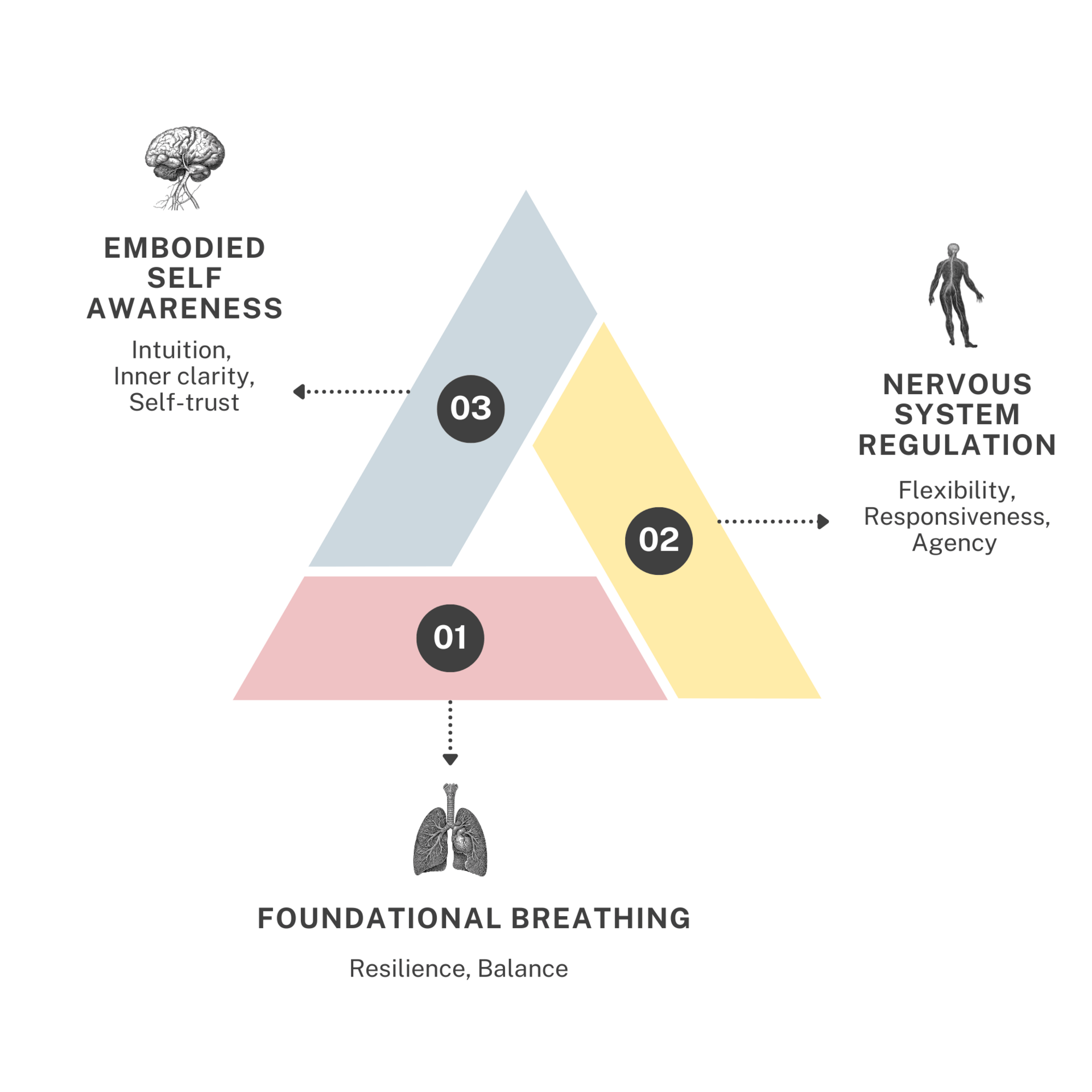- Stretch
- Posts
- The brain-breath loop: change your breath, change your brain.
The brain-breath loop: change your breath, change your brain.
How slow breathing helps you focus, feel calmer and make better decisions.
Hey, I’m Charlotte—Breath and Body-Oriented Coach and writer of Stretch, where 2,700+ curious minds get one idea each week to stretch their definition of performance—through breath, nervous system regulation, and embodied self-awareness.
It’s funny how often people are skeptical about breathwork.
Then as soon as I tell them a few facts about how breathing actually works, their whole attitude changes. They’re surprised. Intrigued.
Because even though we breathe all day, every day, most of us know shockingly little about it.
Here’s one of my favorite “well… did you know…”
When we think of breathing, we typically think of the lungs. And while the lungs are a critical organ, they’re just the site where the gas exchange happens. Oxygen in, carbon dioxide out. But… they’re not what drives your breath.
The real engine of your breath is in your brain.
Deep in the brainstem, there’s a tiny cluster of neurons called the preBötzinger complex. It’s this group of neurons that generates the rhythm of your breath automatically, moment by moment.
Here’s why this is so cool:
The brain-breath loop is bi-directional.
Your brain influences your breath.
Your breath influences your brain.
Meaning:
Change your breathing pattern, and you change your brain activity.
One of the most powerful ways to do that?
Slow, nasal breathing.
A few things happen when you breathe slowly, in and out through the nose:
For one, you're dialling up your prefrontal cortex. That’s the part of your brain that helps you focus, regulate emotions, and make good decisions.
Functional MRI scans have shown that when people slow their breathing consciously, this area lights up with activity. Other researchers found, using infrared spectroscopy, increased oxygenation in that same region.
More activity, more blood flow = more focus, more calm control. All from your breath.
But it doesn’t stop there.
Slow nasal breathing also shifts your brain’s electrical rhythms—moving you toward alpha and theta waves, which are linked to calm focus, creativity, and that amazing but elusive “flow” state.
This isn’t new-age fluff. Back in 2004, a study found increased alpha wave power during slow abdominal breathing. And in 2018, a major review of 15 studies confirmed it: slow breathing reliably nudges the brain toward those meditative, restorative wave patterns.
I mean, this is just wild to me.
You’re telling me I can just close my eyes, breathe slowly through my nose for a few minutes—and that is enough to activate my executive brain and tune my mental radio to a more relaxed, creative frequency?
I have that level of control and power?
Anyone else jumping up and down their chair right now?!
I just find this absolutely incredible.
You don’t need an elaborate system or routine. All you need is a few minutes throughout the day to take control of your breath, and slow - it - down.
→ How slow? Consider that “spontaneous breathing”, when we’re not thinking about it, usually takes between 12 and 20 cycles per minute (cpm) in adults.
Slow-paced breathing is considered anywhere between 5-6 cpm.
There are lots of variations you can try:
5 seconds inhale, 5 seconds exhale (= 6 cpm)
4 seconds inhale, 6 seconds exhale (= 6 cpm)
6 seconds inhale, 6 seconds exhale (= 5 cpm)
Start with the first one, and see how that feels. Count yourself, use a free app like Breathe where you can set your own durations, or follow any guided coherent breathing video on YouTube.
→ For how long? Minimum 5 minutes
→ When? Whenever works for you. I love doing this first thing in the morning, and then whenever I feel like I need it. I’ll usually do 3-4 sessions of 5-15 minutes spread throughout the day.

My app. All I do is adjust the session duration, depending on how much time I have. This reduces cognitive load massively. I don’t think about which exercise to do - all I need to do is set the timer and go.
Anything else to pay attention to?
For now, keep it simple and simply slow down the breath. Just one thing to be mindful of:
When we slow down our breath, there can be an urge to take bigger breaths to compensate for the slower breath. See if you can keep your breath gentle and light. It’s normal for this to feel a little bit challenging at first—especially if your baseline breathing pattern has been fast or shallow for a long time.
But this is where it gets exciting.
Because once you feel the shift, even just once, it opens a door. And that’s exactly the kind of shift we build on inside my coaching program.
Slow breathing isn’t just a tip or a one-off technique. It’s the first, foundational pillar of everything I teach.
Why?
Because when you retrain your breath to be slower, gentler, and deeper throughout the day, it changes the baseline conditions of your brain and body.
From that place, so much becomes possible.
“I was most surprised by how quickly things change when you stop over‑complicating: one week of slow breathing already improved my sleep and focus.”
In the program, we experiment together to find the breathing rhythm that works for you. I create personalized recordings and cues—especially if you're dealing with things like upper chest tension, shallow breathing, or nervous system overdrive. (Which… is the case for most fast-moving professionals.)
If this speaks to you, I’d love to hear from you. Reply to this email, or check out some more stories from past clients here.

My Nervous System Potential Coaching Framework

Reply